Student-Faculty Team Studies Urban Farming in China
Five New Paltz students set out last fall to explore the viability of urban farming in Chongqing, China, under the mentorship of Geography Department Associate Professor Salvatore Engel-Di Mauro and Assistant Professor Melissa Yang Rock. To call their work a successful faculty-student collaboration would be an understatement.
Along with their faculty mentors, Marian Chen, Melissa Iachetta, Aidan Mabey, Kevin McGill and Joanne Zhao developed a successful grant proposal, spent four weeks conducting international field research and gave a presentation at a scholarly conference in October. And though Chen, Iachetta and McGill have now graduated, the team continues to collaboratively analyze their research data with an eye towards the publication of a journal article and a presentation at a second conference this spring.
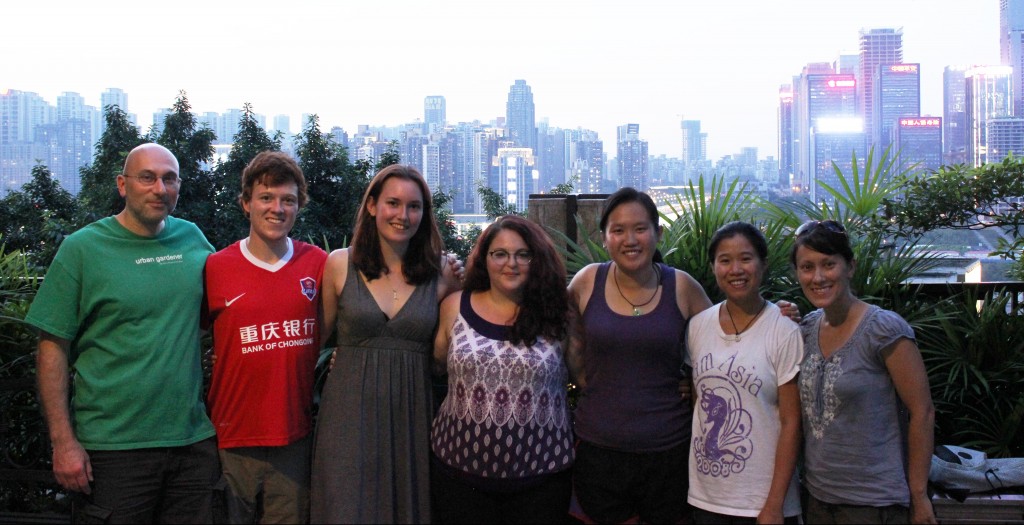
Rock, then in her first semester at New Paltz, heard about the ASIANetwork Student-Faculty Fellows Program grant last fall through the Asian Studies program, of which she is an affiliated faculty member. Seeing an opportunity to collaborate, she approached Engel-Di Mauro, who conducted a Fulbright project the previous year on contamination processes in Rome’s urban gardens. Engel-Di Mauro welcomed the idea to expand on his research by exploring the social processes at work in urban farming.
The professors then recruited students with an interest in environmental issues for their team. Though the grant proposal would focus broadly on urban farming, the professors allowed the students to develop their own research focus.
In researching urban farming in China, the students discovered an intriguing photo essay online of urban farmers in Chongqing. “We were able to see farms directly adjacent to high rise buildings. For me that was so unfamiliar, yet intriguing that I wanted to learn more,” said McGill ’15 (Geography). Upon learning that Chongqing was the fastest growing urban center on the planet, the students saw an opportunity to explore the role urban farming will play in feeding an increasingly urbanized population.
The students had a month to conduct a literature review on urban farming, develop research questions and complete the grant application. They worked throughout Thanksgiving break all the way to the start of finals week. “There was no guaranteed payoff, but they were willing to throw themselves into the application process,” said Rock.
Mabey ’17 (Environmental Science) said she never imagined the group would receive the grant, but welcomed the grant writing practice. “I was passionate about the research we had designed so it was pretty amazing that it came through,” she said. “I’ve done quantitative research before, but I was intrigued by the prospect of qualitative research, as it requires a whole new set of research methods and skills.”
The $39,500 grant paid for all expenses related to the trip to Chongqing, which lasted from July 1-28, including airfare, ground transportation, housing, vaccinations and visas.
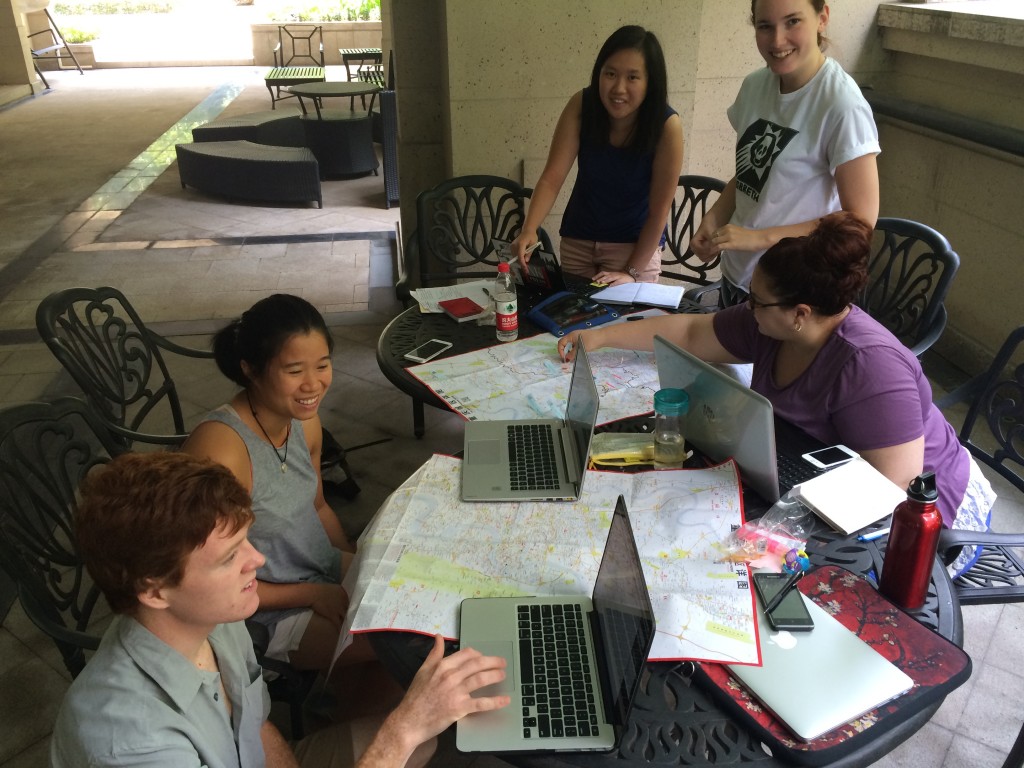
For the site selection process, the team began with a tourist map and labeled any sites that they discovered in their pre-fieldwork research, as well as any sites that they came across during their first few days in the city. They analyzed satellite imagery of areas within central Chongqing and selected areas with favorable farming conditions. They then went on excursions and recorded their observations of urban gardens, noting if the plots were well tended, what crops were being grown and the likelihood of interviewing farmers on the site.
The team discovered gardens in a variety of unusual urban spaces—near a subway, in a gorge underneath a bridge and on tracts of land designated for major construction projects. “I was rather surprised by how common urban farming was in Chongqing,” noted McGill. “Not that there were huge operations everywhere you went, but rather it seemed like corn, squash and other crops were being grown in any soil that was available.”
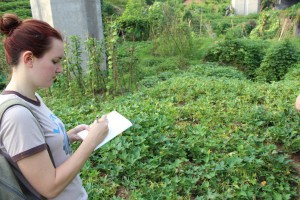

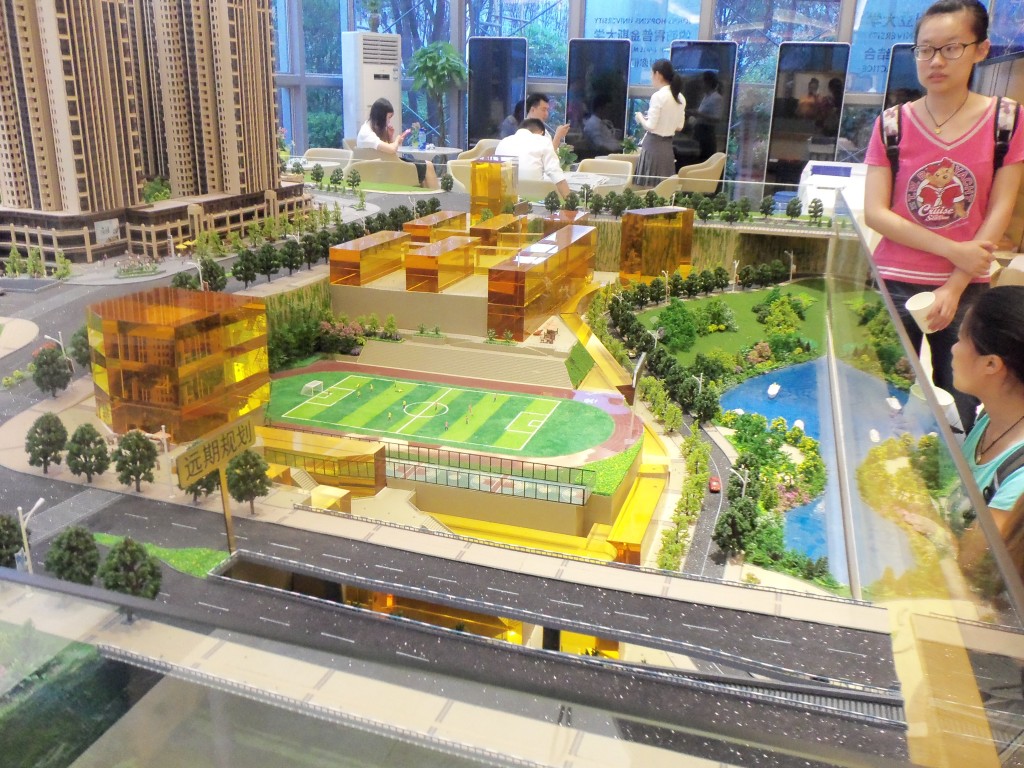
From their interviews with farmers, which they conducted with the aid of translators, the team learned that most were poor to lower-middle class residents nearing retirement age. Prior to the trip, the team assumed that most farmed for survival but discovered a multitude of motivations once in Chongqing. Some farmed as a hobby, others farmed for supplemental food, and others continued a lifelong practice after being displaced from their rural homes.
Zhao ’16 (Geography) reunited with the group in Chongqing after collaborating remotely during her spring study abroad semester in Guilin, China. Zhao noted that unlike the politicized urban gardening/farming movement in the United States, “there is no overarching reason to why they are farming” in Chongqing.
In assessing the urban farms’ sustainability, Mabey observed that urban farmers have no control over the lands that they cultivate. “We saw several cases where land was taken away from farmers, or their plots were leveled by construction companies,” said Mabey, who marveled at the farmers’ resilience. “One woman told us she was happy to farm where she was, and once it was taken away, she was happy to farm somewhere else. I can’t imagine that. Putting so much effort into something, and then not having a say in how long you can do it, but also not minding once it was taken away.”
Engel-Di Mauro and Rock each supervised a group of students while conducting field research, and applauded the students’ collaborative spirit.
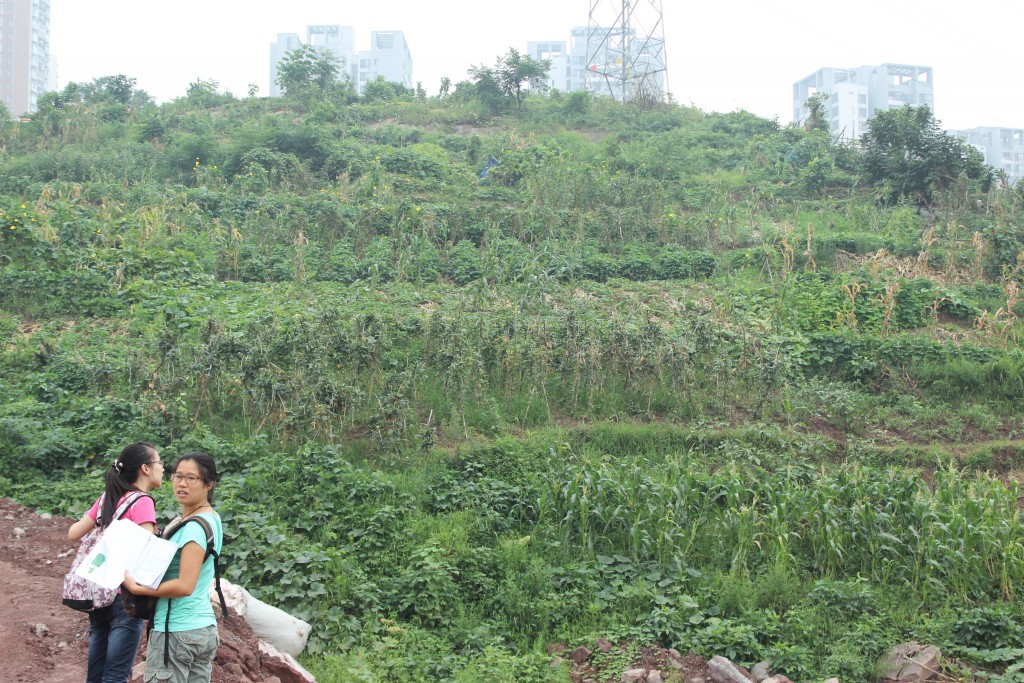
“That’s one of the rewarding aspects, seeing a student develop their skills and become researchers themselves,” said Engel-Di Mauro. “And collaborative researchers,” added Rock. “They really did a great job of working together. They were dividing tasks and assigning people to different groups. Things that we thought we would be doing, they’d already thought of the night before, and they rotated tasks.”
The students had similar praise for their faculty mentors. “Being able to see their process for working and their willingness to advise and teach us at any moment was a learning experience in itself,” said McGill. “I think they did an incredible job of knowing when to mentor us and knowing when to let us go out on our own,” added Mabey. “We were very lucky to have them both as mentors.”
Though the team is still in the process of analyzing their data, Zhao, Mabey, Rock and Engel-Di Mauro shared their initial findings at the New York Conference on Asian Studies, held October 17 at Vassar College in Poughkeepsie. Mabey, the youngest of the team members, gave the presentation, which she described as both intimidating and rewarding.
Mabey plans to attend graduate school, and said her research in China strengthened her desire to “continue in the research field as a career.”
“The grant gave me the opportunity to experience a real research position in an international setting, which is pretty much unheard of in the undergraduate sphere,” noted Mabey. “This experience has propelled me incredibly far in my academic career and will without a doubt be a strong support to my professional career.”
